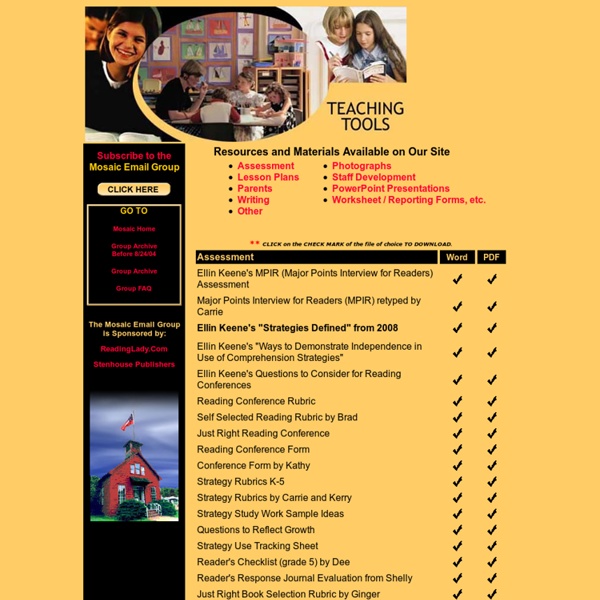



Creative, child-centered art and literacy ideas and activities Elementary Teacher Resources, Get The Teaching Resource You Need Primary Source Materials & Document Based Questions Primary Source Materials & Document Based QuestionsAn Internet Hotlist on Document Based Questions created by Paula GoldsteinNassau BOCES Introduction | Primary Source Materials | Document Based Questions | Assessments | General Resources | Constructed Response Questions Introduction Don't depend on someone else's interpretation of a document. Document based questions (DBQs) are a major focus in schools today.
A Parent's Guide to 21st-Century Learning You’ll find a selection of outstanding online resources and projects, sorted by grade levels, to provide a glimpse of successful school programs. Elementary School: The World Peace Game Skype in the Classroom Peace Helpers Become Classroom Problem Solvers Middle School: Down the Drain Digiteen: Digital Citizenship for Teenagers World of Warcraft in School High School: World Youth News Digital Youth Network Money Corps: Finance Experts as Guest Teachers Across the Grades: More Ideas that Work Ten Tips to Bring 21st-Century Skills Home Resources: Bring the C's to Your School
Free Technology for Teachers Digital Rain Factory: Creating a Storytelling Culture for Organizations Every Student Response Strategies | LessonCast True implementation of personalized learning in schools requires a shift in the roles of educators and a shift in educator professional learning. This course examines the evolving role of teachers incorporating personalized learning experiences in the classroom. Taking a close look at what personalized learning is and isn’t, participants create resources to support teacher roles as facilitator, assessor, instructional designer, content curator, coach, and advisor, and family-school collaborator. Lessoncast believes in personalized professional learning. While the course opens on July 21 (8:00 am EST), you may register at any time and complete the course activities at your own pace.
iLearn Technology Orell Digital Language Lab (ODLL) :: Communication Skills Lab Software Tips for Writing Instructional Objectives - Bloom's Taxonomy Job Aids I am so delighted to see this post that includes Bloom's Taxonomy Wheels by ZaidLearn. I always find that it's far easier to design materials using these wheels than it is to see the verbs/products in lists. Many instructional designers can benefit from these job aids when trying to find the right action verbs for their objectives. Source: Source: Source: Bloom’s digital taxonomy. Have fun, designers! ShowMe - The Interactive Learning Community